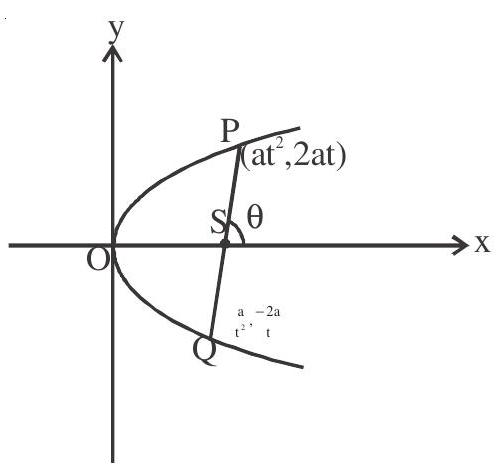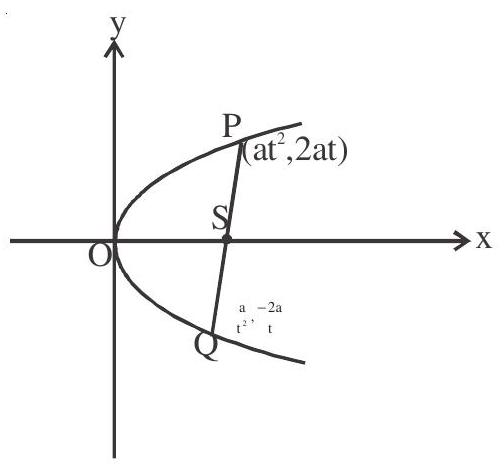PARABOLA-3
Parametric form
Properties of Focal chord:
1. If the chord joining

Extremities of a focal chord are
2. Length of focal chord is a

3. The length of the focal chord which makes an angle
We know
- Minimum length of

4. Semi latus rectum of a parabola is the harmonic mean between the segments of any focal chord of the parabola.
Semi latus rectum

5. Circle described on the focal length as diameter touches the tangent at vertex.
Equation of circle PS as diameter is
Equation of
After solving

Example: 1 The length of a focal chord of the parabola
(a).
(b).
(c).
(d).
Show Answer
Solution:
In
Answer: c

Example: 2 The coordinates of the ends of a focal chord of a parabola
(a).
(b).
(c).
(d).
Show Answer
Solution: Let
Answer: b
Practice questions
1. The focus of the parabola
(a).
(b).
(c).
(d).
Show Answer
Answer: (d)2. The equation of the parabola with vertex at
(a).
(b).
(c).
(d).
Show Answer
Answer: (b)3. The equation of the latus rectum of the parabola
(a).
(b).
(c).
(d).
Show Answer
Answer: (a)4. The equation of the parabola whose axis is parallel to
(a).
(b).
(c).
(d). none of these
Show Answer
Answer: (c)5. The parametric equation
(a). a circle
(b). a parabola
(c). an ellipse
(d). none of these










